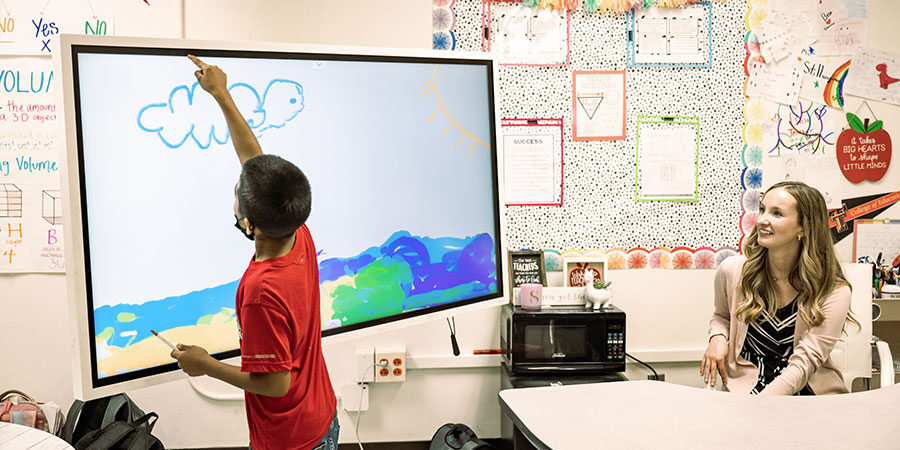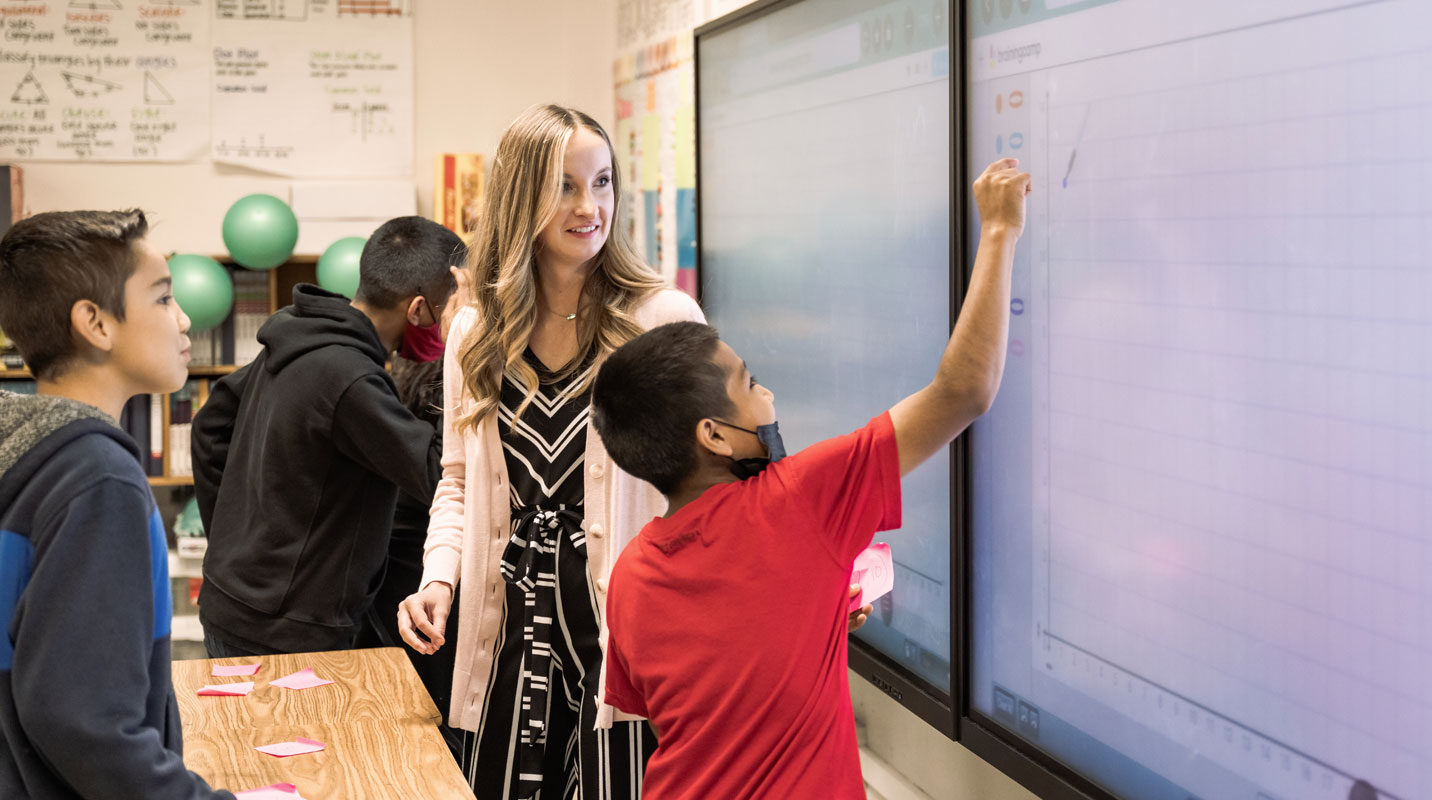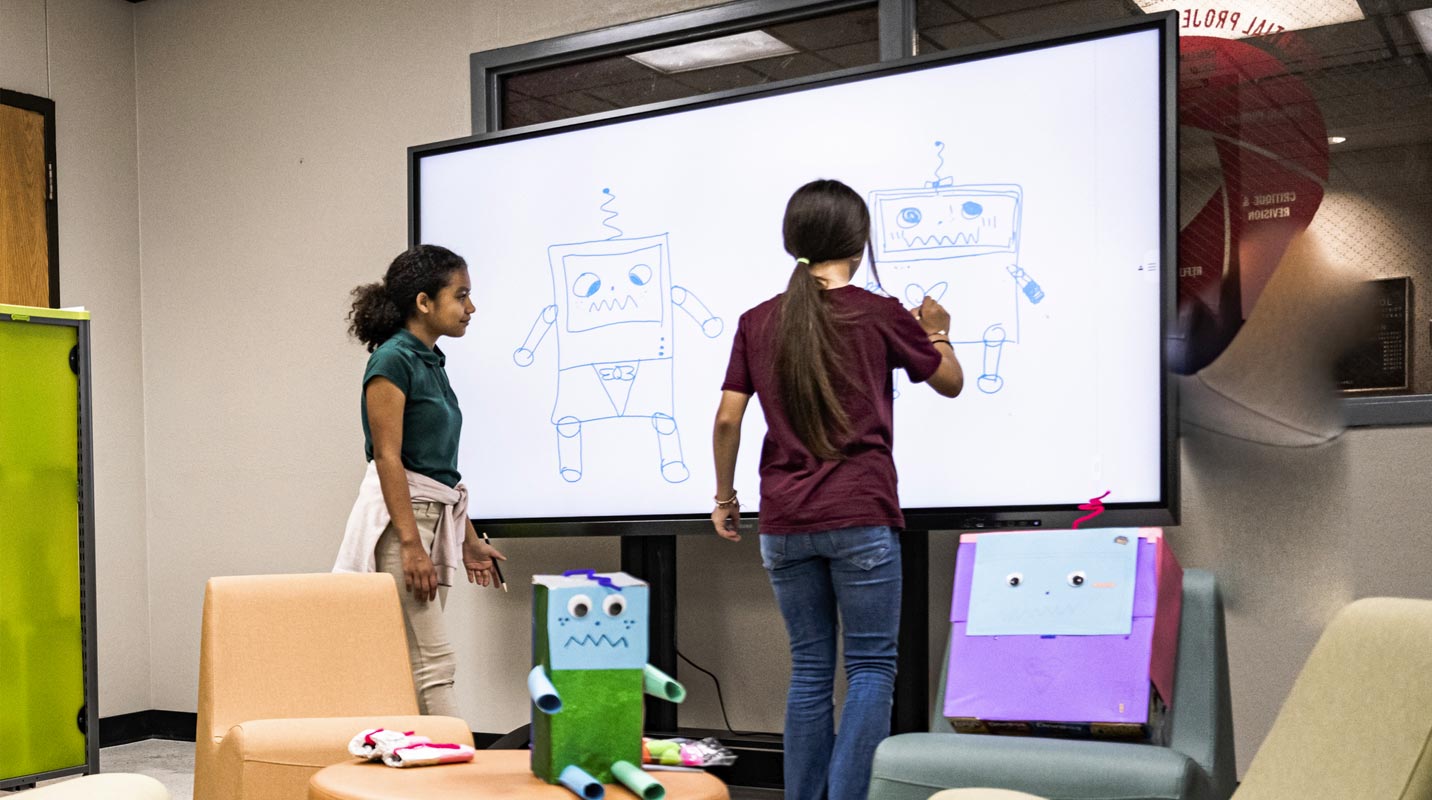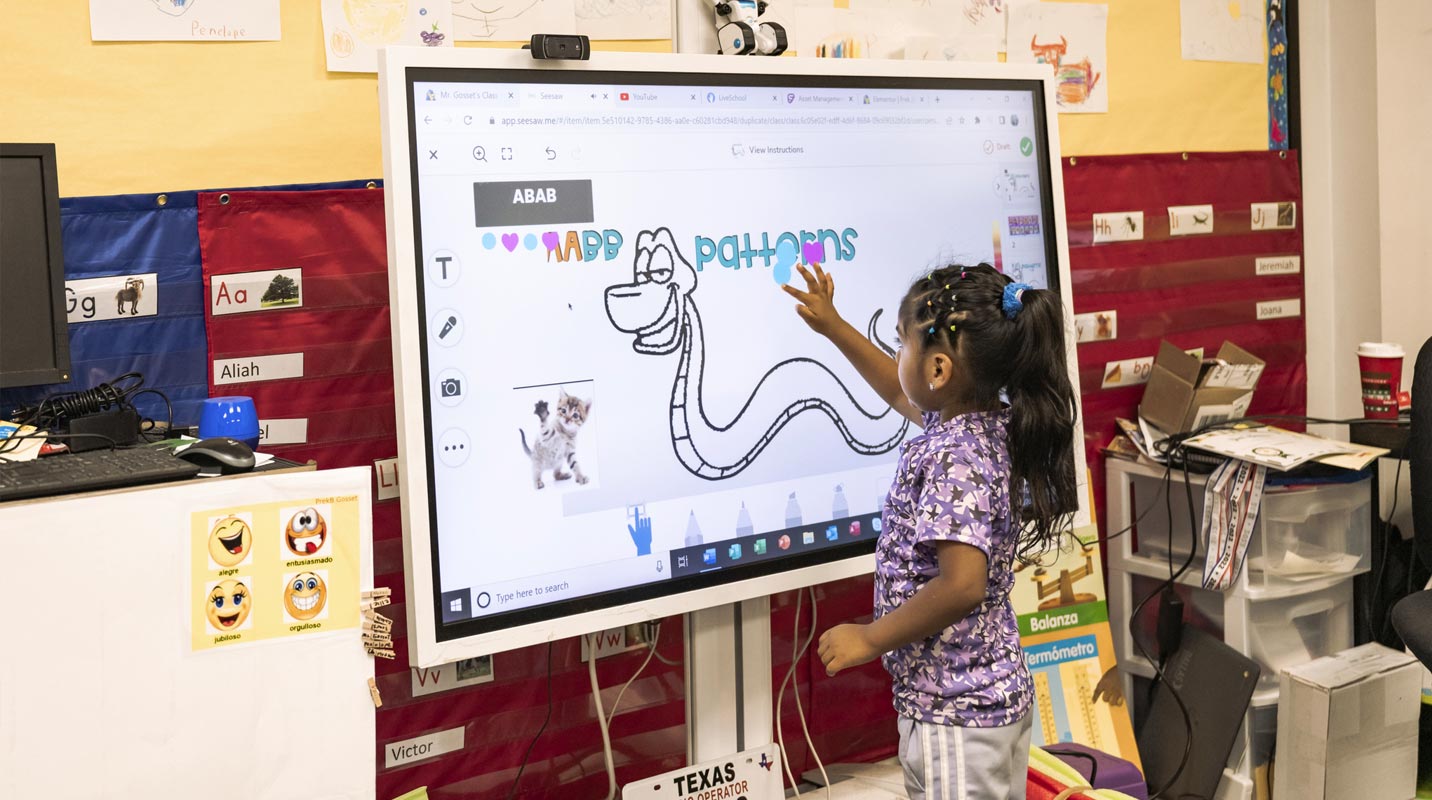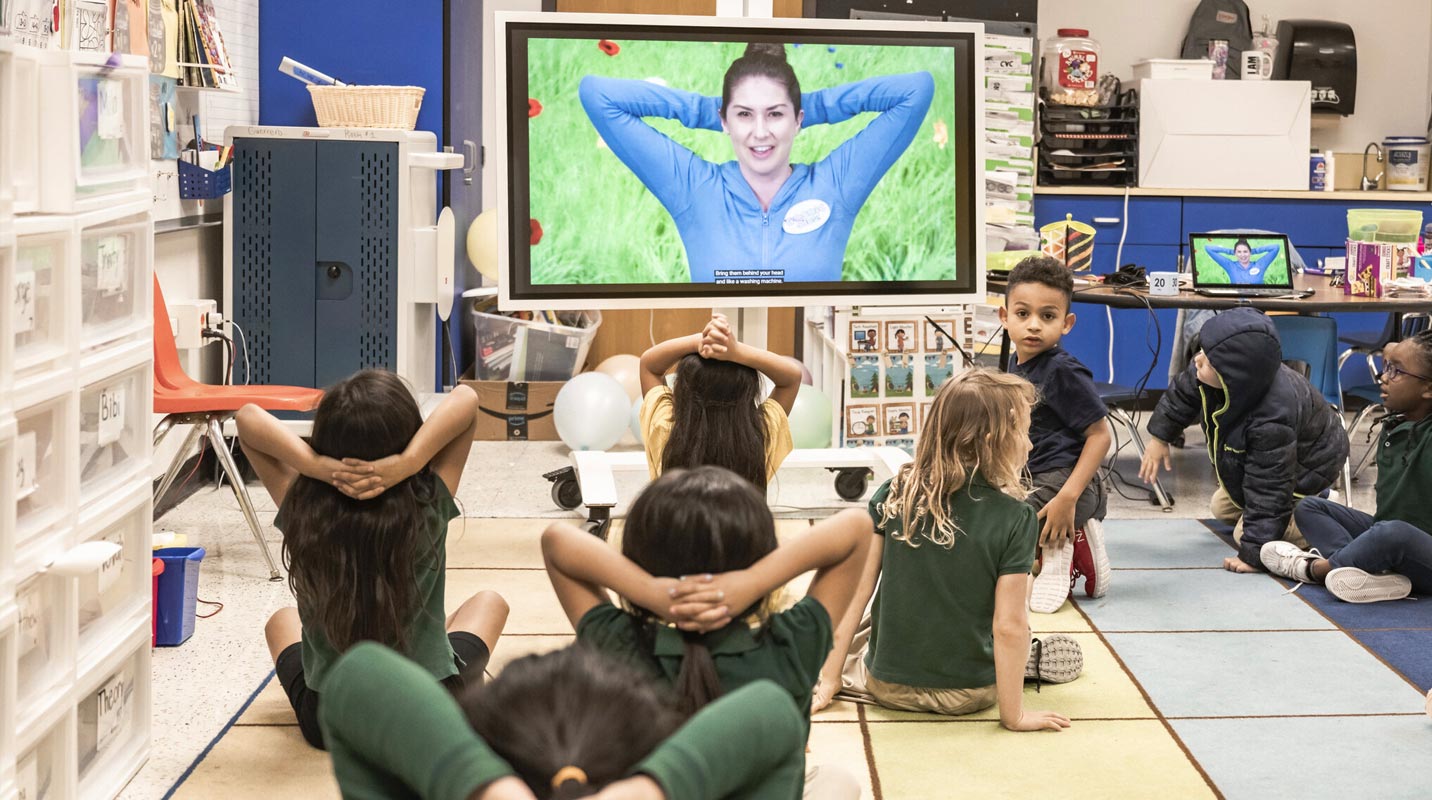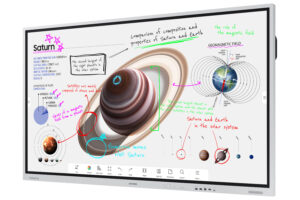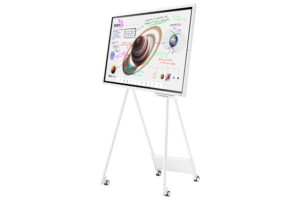
The Challenge
The Solution
Amid a broader project looking to upgrade technology throughout the facility, principal Jairo Casco discovered interactive whiteboards from Samsung. The tech-forward elementary school tested these versatile, collaborative displays in a couple of classrooms and saw immediate success. Teachers used the technology to create more immersive learning experiences, with a screen that can be moved about the room.
"We want students to analyze what they are learning, collaborate with each other and have opportunities to be creative.”
— Jairo Casco, Principal of Hogg New Tech Center
The Results

About Hogg New Tech Center
Hogg New Tech Center is a prekindergarten through fifth-grade elementary campus in Dallas, Texas. The school’s mission is to leverage students’ interests, knowledge, skills and social emotional awareness through innovative learning experiences with five learning outcomes: knowledge and skills, written and oral communication, agency and collaboration.
The Challenge
Aging technology limited teacher and student engagement
Hogg New Tech Center aims to prepare their 300 elementary students for today’s world by empowering them with future-ready skills.
Principal Jairo Casco knows purposeful technology can help support that mission. A few years ago, he looked around the school with a critical eye and realized their outdated technology wasn’t up to the task. Teachers who wanted to expand their students’ minds and learning experiences were relying on wheeled carts with projectors, microphones, speakers and a laptop or PC. The technology was hardwired to the cart, limiting flexibility. Each piece of equipment on the cart also required its own cables, creating a mess of tangled wires.
These setups worked — up to a point. Teachers could roll the cart across the classroom and project onto a wall or dry-erase board, but the image was often too small or low-resolution for everyone in the room to see clearly, which restricted students’ engagement.
These constraints were troubling to Casco. “While it’s always important to learn simple reading and math skills, we also want students to analyze what they are learning, collaborate with each other and have opportunities to be creative,” says Casco. “Our technology wasn’t creating these opportunities.”

The Solution
Interactive displays re-energize classroom learning
With the goal of finding technologies that would improve students’ learning experience, Casco started researching new solutions. He came across a video of the Samsung Flip Interactive Whiteboard and immediately saw the benefits it could offer his students and teachers. These interactive devices would enable more creative lessons and hands-on learning. Teachers and students could draw and write directly on the devices, both during regular class time and in small-group breakout sessions.
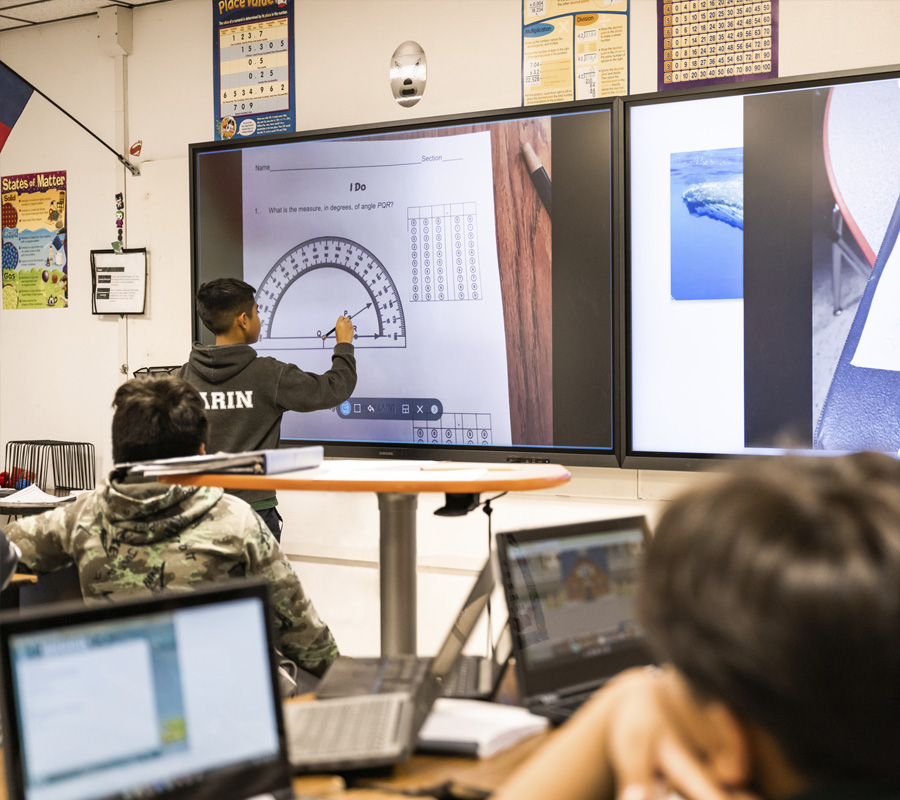
The school ultimately purchased 20 Flip 55-inch units, which Casco is now replacing with 65-inch Flips. The units sit on movable carts and wirelessly connect to the teacher’s laptop via Bluetooth. Teachers have found that the Flip works perfectly for small-group learning, since the board can easily be moved to wherever students need it.
Just as Casco imagined, the devices have transformed the way students collaborate with each other and the way educators teach. Since the board is easy to set up and use, elementary students of all ages can walk up to the display to perform learning exercises. Teachers don’t have to waste valuable time setting up technology or connecting devices to begin their lessons.
After seeing the success of the Flip units, Casco decided to try the 75-inch Interactive Display. Two classrooms have already been outfitted with a pair of these displays, mounted side-by-side to create an expansive interactive video wall.
Additional 75-inch displays are in the school’s library as part of a reimagined media center — where movable bookshelves, configurable furniture and ample technology facilitate student collaboration. Casco hopes to eventually buy more 75-inch units so every classroom can have an interactive video wall.
The Technology
75” Interactive Pro
Samsung’s premium interactive display, the Interactive Pro, supports up to 20 simultaneous touch points and has a 26ms latency for a smooth writing experience. Multiple connectivity options allow educators and students to wirelessly share content from personal devices or connect to third-party education solutions.
65” Interactive Display
Samsung’s 65” 4K UHD interactive display can be wall-mounted or placed on a portable stand. Versatile connectivity options allow users to effortlessly connect devices to the display, annotate on top of the images and save everything.
The Results
Collaboration and creativity thrive
With a mounted interactive display, teachers can move freely throughout the classroom, and students can wirelessly connect their own devices to the display. Versatile connectivity ports and wireless options enable connection with virtually any device, regardless of its OS.
The interactive displays are also easy to use and manage. Educators can control the screen from their preferred personal device, such as an Android or Apple smartphone, tablet, Chromebook or PC, and mirror it to the Flip so the whole class can see. They are so easy to use, in fact, that Casco says they have 3-year-old kids in pre-K using them, too.
With an embedded web browser, the interactive displays provide teachers with direct access to their presentations and additional learning resources. Students can also use the browser for online research. Anyone can write or annotate on the display with an interactive whiteboard pen. And in paint mode, the display lets users “paint” with their fingertips, with access to a large color palette. Annotations and drawings are easy to save and send from the interactive whiteboard to other devices.
The flexibility that these devices provide has fostered teachers’ creativity as well. One teacher at Hogg New Tech, in a classroom with an interactive video wall, projected a video onto one of the 75-inch displays and simultaneously wrote on the other. Traditionally, the teacher would have needed to first show the video and then present about it, whereas the interactive video wall created a more immersive, connected experience.
Since the displays have been turned over to the students, teachers and administrators have witnessed impressive peer collaboration and creative learning. After reading about the native peoples of Alaska, for example, one group of students was assigned to create miniature igloos out of toothpicks and marshmallows. As they designed their igloos, the students worked in small groups, using the displays to sketch their ideas and give each other constructive feedback.
In another case, a teacher asked a shy fourth-grade student who had never spoken up in class to work out a problem on the interactive display in front of the class and describe how he solved it. The results were better than anyone could have imagined.
“I’ve known him since kindergarten and I’ve never heard him speak, and he was talking through and articulating correctly how to solve the problem,” Casco says. “You could practically see the lightbulb go on.”
The interactive devices are undoubtedly a success.
“You can really see how the classroom has changed. In one of the classrooms with the 75s, we saw an uptick in how engaged the kids were,” Casco says. “The teacher was very excited.”
Casco is currently looking to add more interactive displays in classrooms — and expand their use to enhance art, music and physical education classes. He also hopes to integrate technology such as augmented reality (AR).
All of these efforts support Casco’s vision for the school as a place of “students owning their learning.”
“Schools can be so busy pushing content that there is no pause for application,” says Casco. “Instead of asking them to read a passage and write down the author’s purpose, [for us] it’s about encouraging deeper, project-based learning. We want them to be able to transfer that skill to different content or situations.”
Interactive displays that let students create, explore, imagine and practice on their own terms represent a large step toward that vision.
